Lisbon is full of historical monuments and significant structures, from São Jorge Castle to the Jerónimos Monastery. But there’s one place that most visitors (and many locals, for that matter) often overlook. The Mãe d’Água das Amoreiras Reservoir is a unique building that represents the importance of water in the city’s history. And, it is hidden in plain sight.
If you were to walk past the Mãe d’Água das Amoreiras Reservoir, you might not give it a second glance. But once you step inside, you’ll see why it’s so special. Here’s our guide to this surprisingly beautiful site. From its fascinating history and purpose, to practical tips for visiting it.
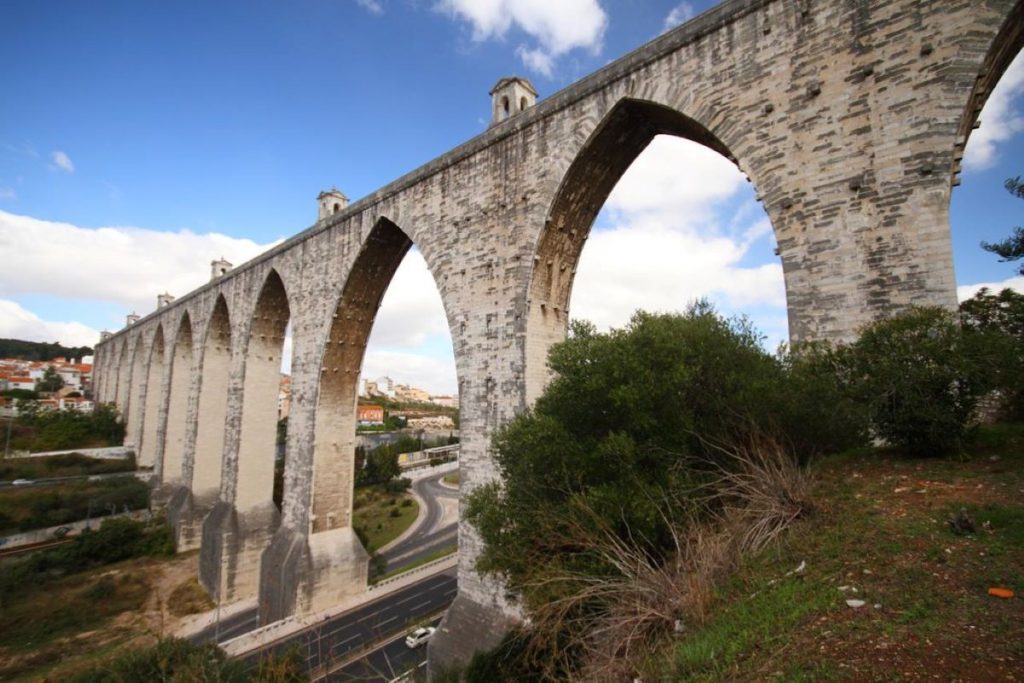
History of construction
The Águas Livres Aqueduct
If you’ve ever driven west of downtown Lisbon to cross the Ponte 25 de Abril (the famous red bridge), you might have noticed a series of large stone arches leading into the city. This is the Águas Livres Aqueduct. It was built in the 18th century to bring water from Sintra to Lisbon. It covers a total of 36 miles (58 kilometers) and is powered by the force of gravity alone.
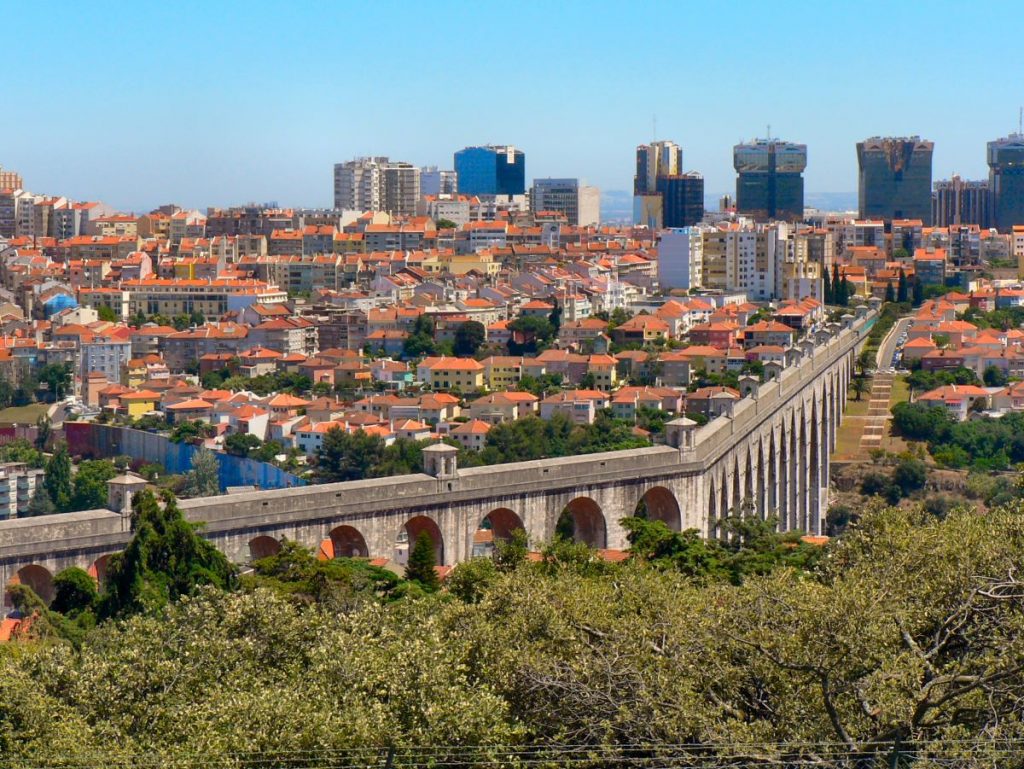
The Mãe d’Água das Amoreiras Reservoir
The Mãe d’Água das Amoreiras Reservoir is the point where the aqueduct enters Lisbon. From here, the water was distributed across the city. Carlos Mardel, a Hungarian architect, designed the reservoir project, starting in 1746. In 1771 Reinaldo Manuel dos Santos replaced him. However, neither of them lived to see the final product. In fact, it took 88 years for the construction to be completed.
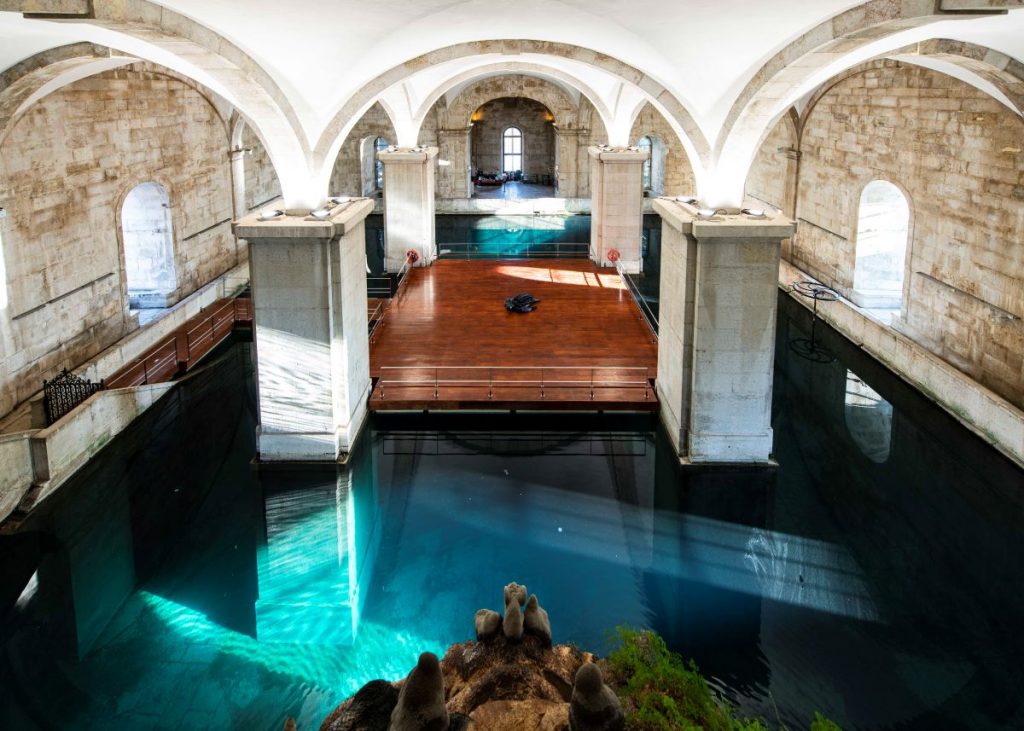
Traveler’s tip: Lisbon is home to a host of unique landmarks and sights to see. From an earthquake museum to a national tile museum, come along as we tour Five Unusual Museums in Lisbon.
What makes this reservoir unique?
Over the course of nearly nine decades, lots of changes have been made to the original plans and several of Mardel’s designs have been simplified. Even so, the reservoir includes several interesting details and design choices that make it much more than a utilitarian structure. Ultimately, it’s an homage to the role of water in Lisbon’s history and to the people who built it.
Just down the street there’s a triumphal arch that was built in 1748 to celebrate the aqueduct’s successful delivery of water, essential for the city’s development. In front of the building you’ll find a bust of Manuel da Maia, who led the construction of the aqueduct. He also later played an important role in rebuilding Lisbon after the earthquake of 1755 (along with Mardel). Interestingly, the aqueduct is one of the only monuments that survived the disaster intact.
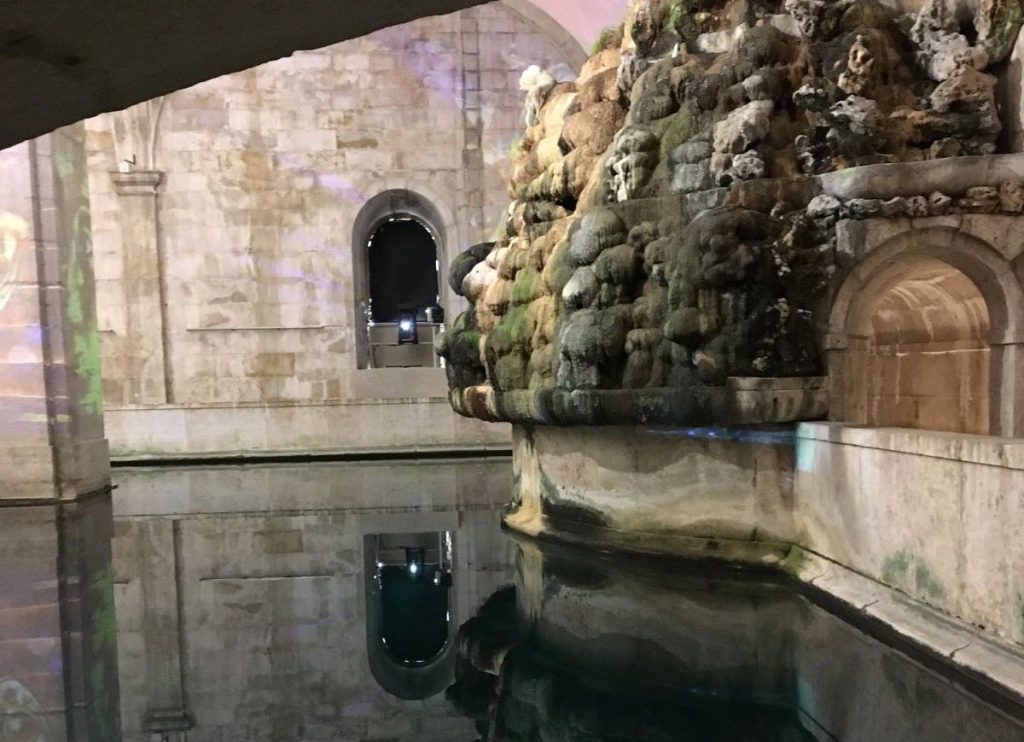
Recent updates
The aqueduct and reservoir were put out of commission in 1973. But, in 2022 EPAL (the company that now provides water to Lisbon) announced that water would flow through the reservoir once again. This was in order to feed the city’s fountains and provide an emergency water source in case of fires, droughts, and other disasters.
What to see and do at Lisbon’s reservoir
The Mãe d’Água das Amoreiras Reservoir is located on one corner of Jardim das Amoreiras, a large square with a public park and playground. From the outside it’s relatively unassuming. It is a large rectangular building with smooth stone walls, arched windows, and a flat roof. Inside, however, it creates the impression of a holy space—almost like a minimalistic cathedral, minus the religious symbols and stained glass.
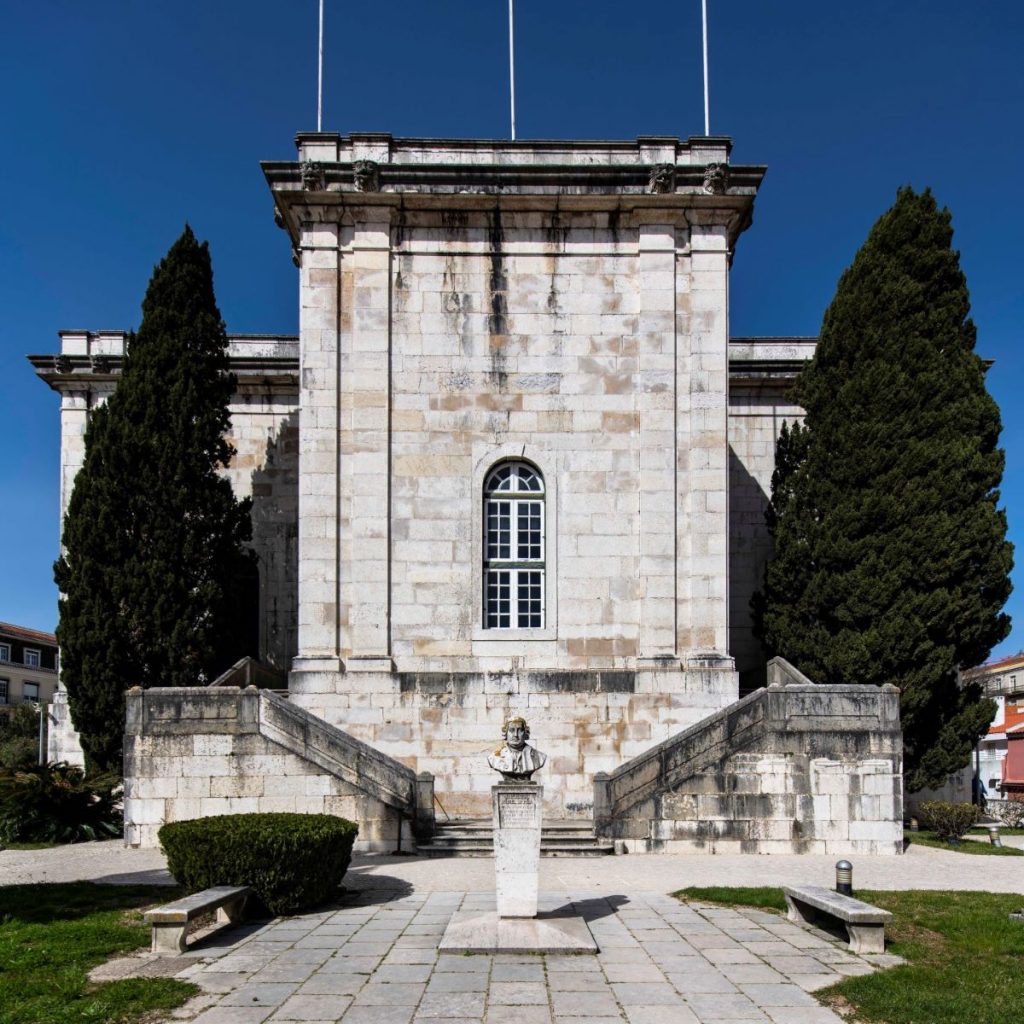
The reservoir’s architecture and views
There are stone columns, vaulted ceilings and of course the water tank, which is about 25 feet (7.5 meters) deep and has a capacity of nearly 200,000 cubic feet (5,500 cubic meters). The centerpiece is a waterfall made using rocks from the aqueduct’s source in Sintra. There is a stone dolphin’s head at the top and the water flows from its mouth, over the rocks, and into the reservoir.
There are intricate details to see throughout the structure – keep an eye out for the gargoyles! The other main attraction is the rooftop terrace, which offers fantastic views of Lisbon. The building is also notable for its impressive acoustics.
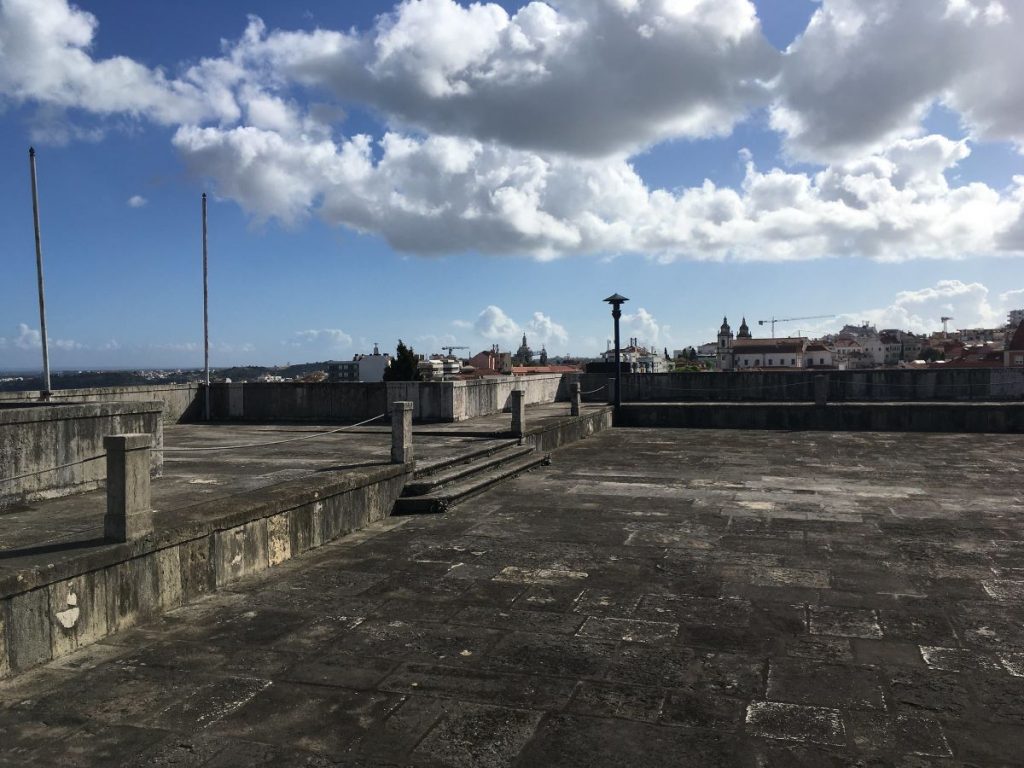
An art gallery…in a reservoir?
Today the reservoir is home to Immersivus Gallery Lisboa, which hosts unique exhibitions in which projections of artwork and other imagery bring the walls and ceilings to life. The dynamic visual show includes music and audio to create a completely immersive experience. Examples include exhibitions dedicated to the works of Monet, Klimt, and Van Gogh, and another that’s transports you to Ancient Egypt.
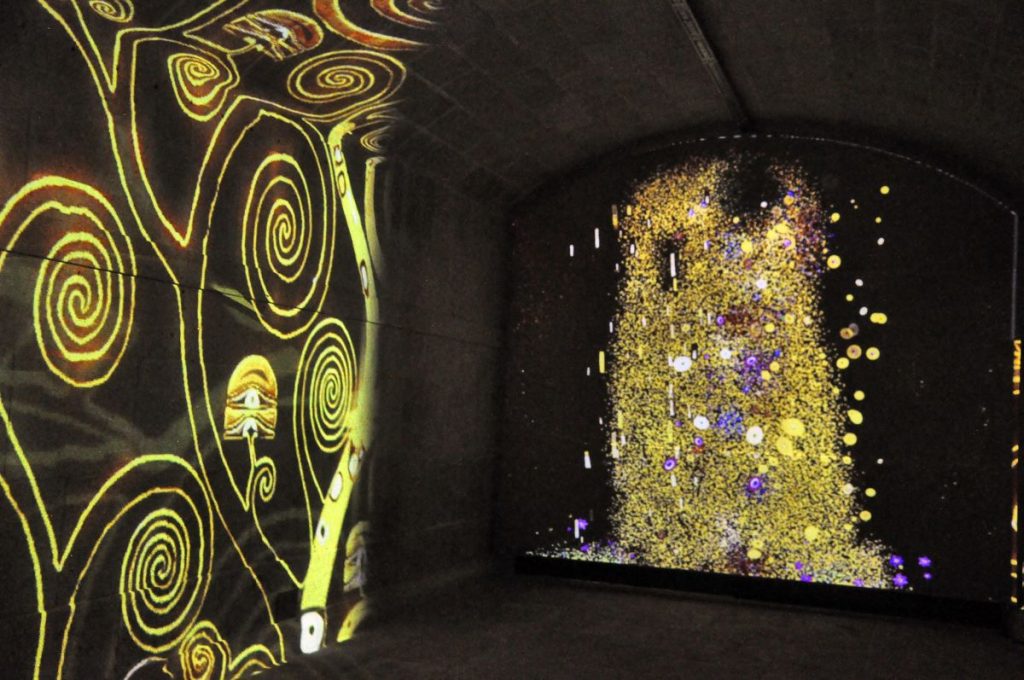
Tips for visiting the Mãe d’Água das Amoreiras Reservoir
The Mãe d’Água das Amoreiras Reservoir is one of four sites that make up the Museu da Água (Water Museum), which is managed by EPAL.
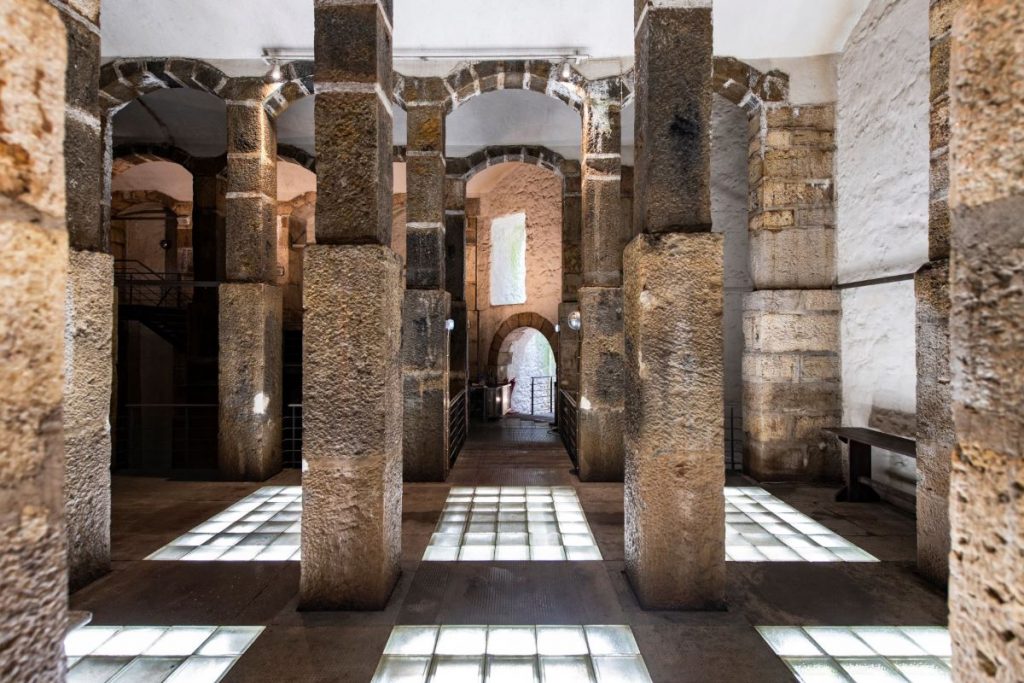
How to get there
To reach the reservoir, you can take the metro’s yellow line to the Rato station, which is just a five-minute walk away. There are several bus stops nearby as well. It’s also possible to walk from the city center. Rossio train station is around 30 minutes away on foot. Or, if you prefer to go by car, it takes about 15 minutes to drive from Chiado, an area with some great restaurants.
From the roof to the tunnels
Whether you’re going for an immersive art exhibition or just to check it out, take your time to explore the reservoir and all its interesting details. Make sure to go up to the roof for the views and peer into the seemingly endless tunnel of the aqueduct itself. It’s especially eerie if you know the story of Diogo Alves, a Galician serial killer who threw several people off the top of the aqueduct in the 1830s—but that’s a story for another time.
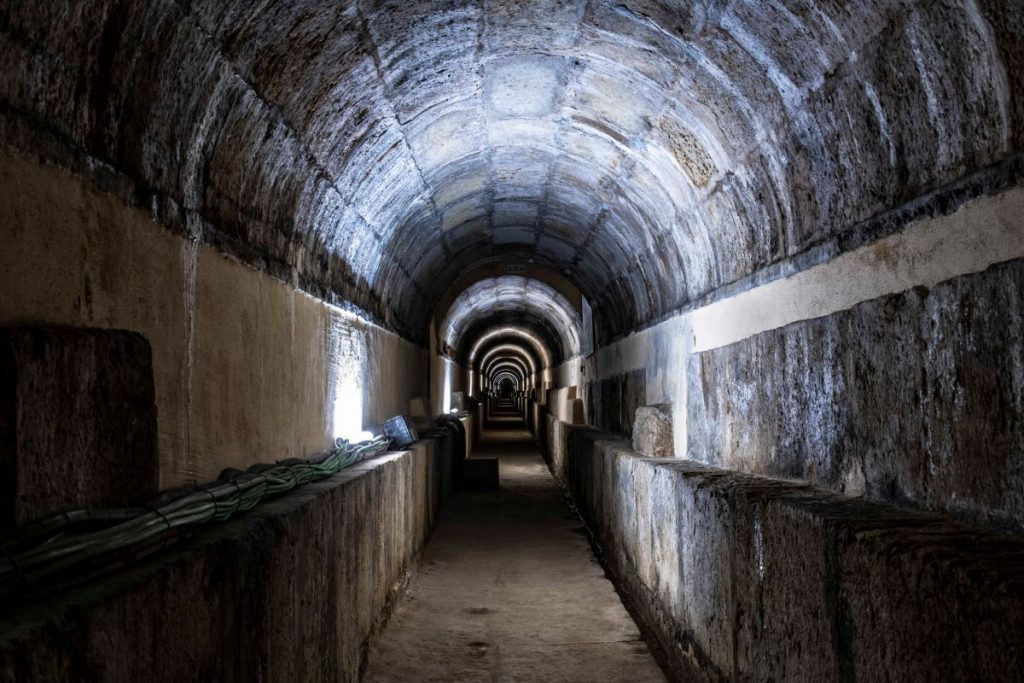
FAQ´s – Mãe d’Água das Amoreiras Reservoir
Is there an entrance fee to visit the Mãe d’Água das Amoreiras Reservoir?
Yes, the reservoir is part of the Museu da Água network, and you pay a small fee for admission. Prices vary depending on whether you’re visiting the reservoir only or also attending an Immersivus Gallery exhibition. Special shows usually require separate tickets. It’s a good idea to check the museum’s official website for the most up-to-date prices.
Do I need to book tickets in advance?
For general visits to the reservoir, you can often purchase tickets at the entrance. However, the Immersivus Gallery’s immersive art shows can sell out, especially on weekends or evenings. Booking online ahead of time ensures you get your preferred time slot and avoids waiting in line.
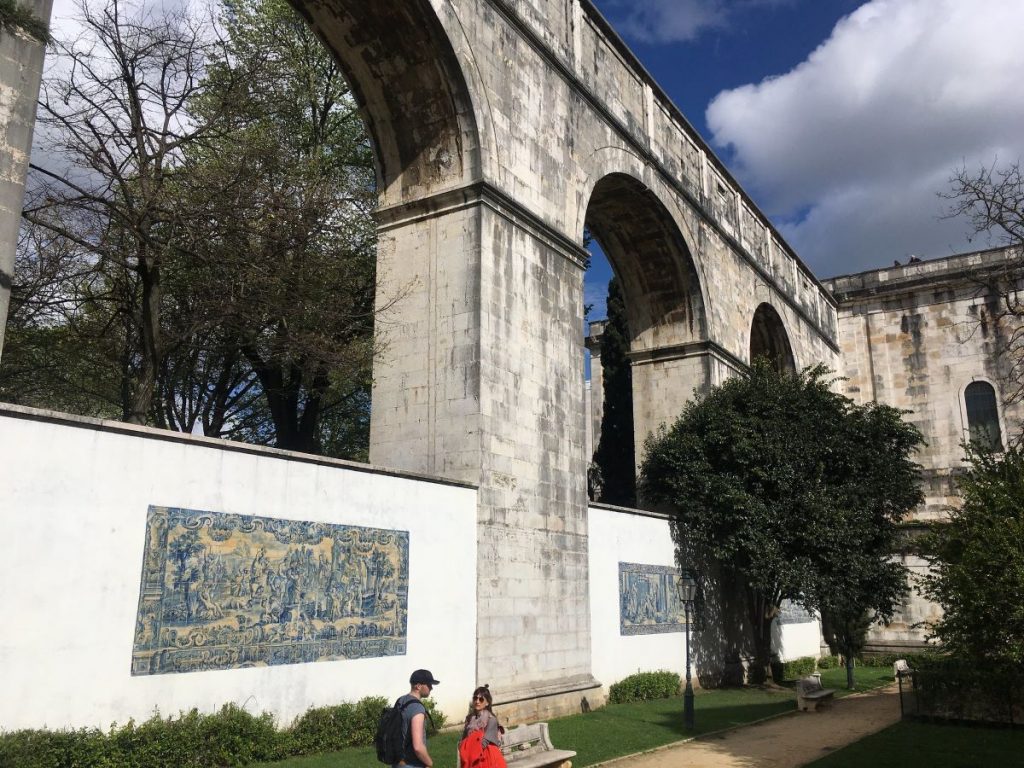
Is the reservoir accessible for visitors with mobility concerns?
The main floor of the reservoir is generally accessible, but access to the rooftop terrace involves stairs, and some pathways inside may be uneven due to the historic nature of the site. If accessibility is a priority, contacting the museum in advance can help confirm available accommodations or alternative viewing options.
How much time should I plan for my visit?
A typical visit lasts 30–60 minutes, depending on how much time you spend exploring the architecture, reading displays, and enjoying the rooftop views. If you’re attending an immersive exhibition, expect to add an additional 45–60 minutes for the full experience.

Want to check out more of the best of Lisbon? Come along on one of our walking tours to see this city’s best-kept secrets. Whether you sign up for the Tastes & Traditions of Lisbon Food Tour or the Best of Belem: Jeronimos Monastery & Belem Walking Tour with River Cruise, our local guides will give you special insight into this fantastic city’s history, monuments, culinary gems and more.
